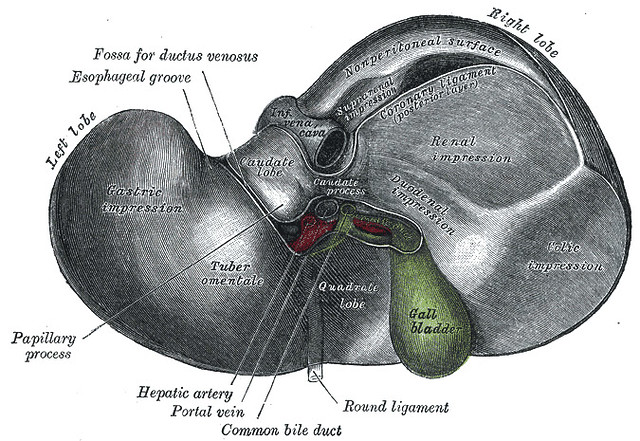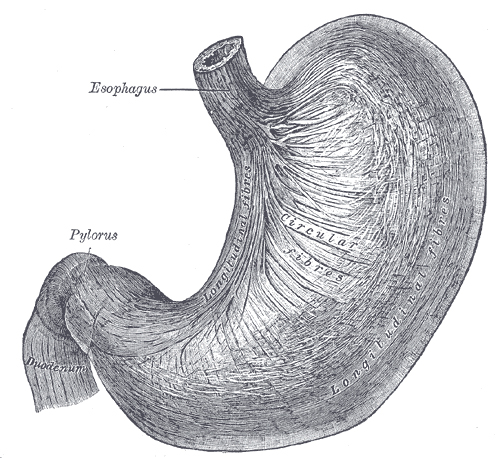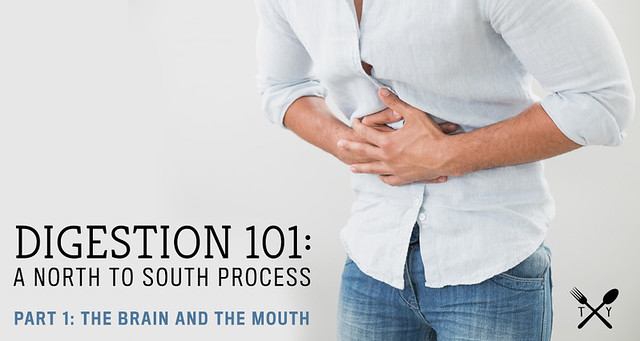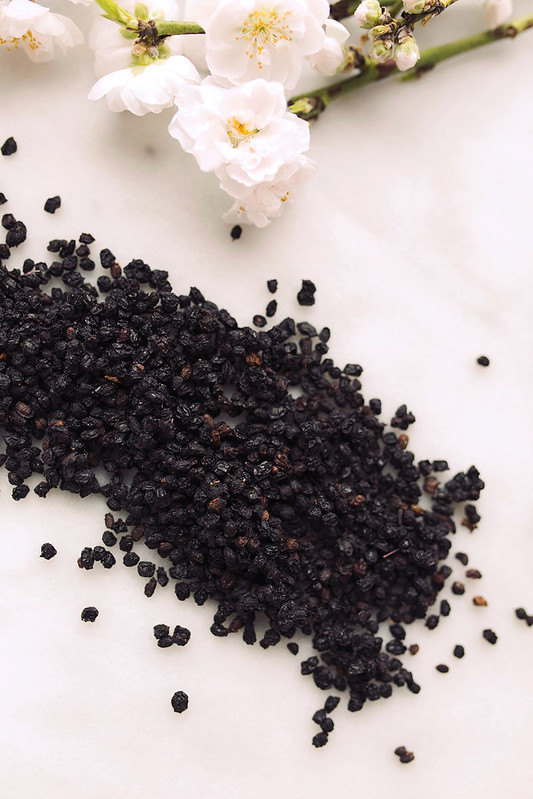-
Digestion 101: A North to South Process // Part 3: The Accessory Organs – Pancreas, Gallbladder and Liver
Digestion 101: A North to South Process
As we continue more south in digestion, after first the brain and the mouth and then the stomach we move onto the accessory organs, the pancreas, liver and gallbladder
As we move further south from the stomach, while the small intestines are next in line for the food, but we first take a small pause/detour to discuss “the accessory organs of digestion”. The pancreas, liver and gallbladder, each play a very important role in the digestive process and each can be affected with their own dysfunction as well.
The stomach, small intestines and large intestines are all part of the system of digestion we call “the alimentary canal”, “the gut tube” or “digestive tube”. Between each of these organs we have valves or sphincters that keep the food where it is supposed to be and move it along when the time and the environment is right. These accessory organs are not a part of this tube or system but they play a major role in the process.
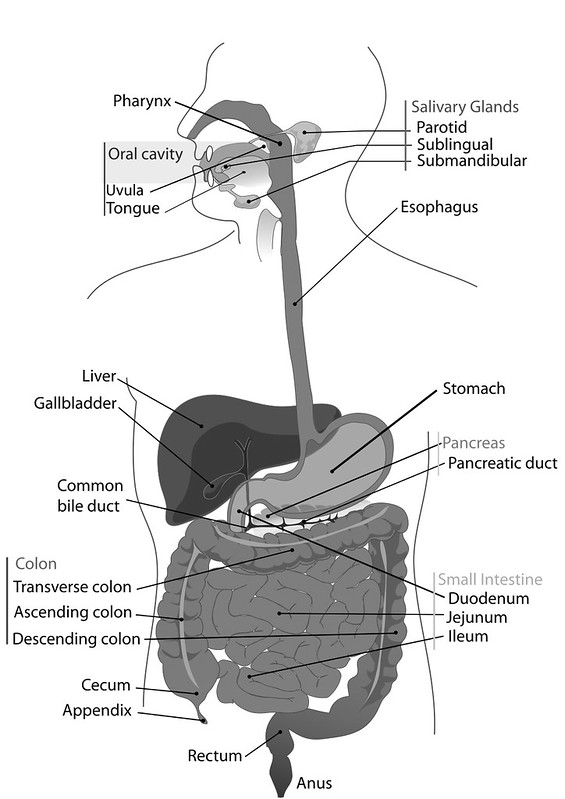
There is a synergistic and symbiotic relationship with the small intestines and these accessory organs, so we will discuss first how these play a role before we move into the function of the rest of the GI tract.
The duodenum is the start of the small intestine, but it almost acts more as part of the stomach, in it’s roles of breaking things down further playing a larger part in the process of digestion, vs the rest of the small intestine being less of a digestive organ and more about absorption or assimilation.
See Part One: The Brain and The Mouth
THE PANCREAS, GALLBLADDER AND LIVER:
How It’s Supposed to Work
When the pH of the chyme (the digested food moving from the stomach into the small intestines) is in it’s normal range, 1.5 – 3.0 , which we talked about in the stomach post. This is very acidic and necessary to the stomach performing it’s duties. As it hits the pyloric valve and into the duodenum with it’s proper pH, this is where the roles of the accessory organs come into play. This highly acidic chyme is what triggers these functions.
The duodenum no longer wants this highly acidic chyme and in order for the enzymes to work correctly it has to take that chyme to a neutral pH of 7.0. This happens by way of sodium bicarbonate, which is released by the pancreas to alkalinize the chyme. This release of sodium bicarbonate is signaled by secretin, a hormone released by the small intestines, which as you might have already guessed, is triggered by the (proper) acidic level of the chyme, that pH of 1.3 – 5. (Ahem, here is that reminder to look north, if the stomach isn’t producing proper HCl, then none of this will function properly, either!!)
-
Digestion 101: A North to South Process // Part 2: The Stomach
Digestion 101: A North to South Process
As we continue more south in digestion, after the brain and the mouth, next up we have the stomach. Before we get started, I wanted to remind you that you will constantly hear me reiterate as we go through this step-by-step process to “always look north” and I want you to truly understand what this means, exactly. I am referring to the fact that often times dysfunction that presents itself from further down the line, is actually due to a malfunction more north. For example, as you will read about in this second post and as we talked about briefly in the first, (the brain and the mouth), if you are eating in a stressful state and your body doesn’t make the necessary switch to that parasympathetic mode (rest and digest), then before your stomach ever had a chance to function properly, the brain basically threw it under the bus. So, while the symptoms may present themselves in the stomach (or even further south) it may not make sense to supplement, treat or approach the symptoms specifically until we instead move more north to investigate if these malfunctions are treatable with just some simple lifestyle and mindset shifts.

This is not at all to say that all digestive dysfunction starts in the brain, that would make my job and my own healthy journey so much simpler. In fact, there are many reasons why dysfunction can exist, as you will see, but beginning the investigative process at the start, way up north, allows us to rule out the possible, more simple resolutions before we move deeper and into more challenging treatments.
See Part One: The Brain and The Mouth
THE STOMACH:
How it’s Supposed to Work
After we chew our food, it turns into what we call a “bolus”. The bolus passes through the esophagus and the cardiac valve (the lower esophageal sphincter) and the bolus then enters our stomach, At this stage gastric juices are released. I like to think of the stomach as a blender. Mucous, pepsin and hydrochloric acid are all released for the “churning and burning” stage of digestion. Both mechanical and chemical breakdown happens at this stage.
The hydrochloric acid (HCl) being the most important of these gastric juices as it creates an acidic environment that disenfects the food and aids in the breakdown. Despite popular belief the stomach is absolutely meant to be acidic. In a healthy individual the pH of the stomach during digestion should drop to 1.5 to 3. We have a thick mucosal layer in our stomach, that acts as a barrier that protects the cells from the acid.
-
Digestion 101: A North to South Process // Part 1: The Brain and the Mouth
As many of you know, my digestion has been the source of much on and off distress over many years of my life. While I found the greatest relief by going 100% gluten-free after discovering an intolerance over 11 years ago, my digestion in the time since, has still not been without challenge and discomfort and at times, straight pain. As I began the journey to heal my body of my newly discovered autoimmune condition last year, we first needed to address my still, not-so-great digestion. This foundational approach to the healing of consequences, such as autoimmune conditions, by first treating digestive dysfunction – is a common approach, especially for functional and naturopathic doctors and nutritionists, who know that without properly functioning digestion, we cannot expect to ever find health and vitality. Without proper digestion we can be sure that we aren’t going to adequately assimilate the necessary nutrients through the food we are eating, no matter how healthy we eat and no matter what supplements or medications that we take. In working with a naturopathic doctor, we discovered early last year that I was struggling with leaky gut, and even found at the start of this year, after a year of dealing with the leaky gut, yet still not feeling 100%, that I had an unwelcome parasite and an excess of pathogenic bacteria (both likely the results of having a leaky gut, for who knows how long). It’s been a long year, to say the least.
Through the process of my own personal journey, I have and I continue to learn so much about digestion. This personal, ongoing path towards healing and all of the knowledge and know-how I have collected along the way, is what ultimately prompted me to go back to school to become a certified nutritional therapist. I wanted to truly learn and understand all of this in much deeper and fuller way, to allow me to not only continue to help and heal myself and my loved ones, but to also share this knowledge with others and hopefully help them help themselves, in the process.
So much of what we have been learning in school, about nutrition and more specifically, digestion, has really struck home for me. Much of what we cover are very simple concepts that I truly believe most people need to understand, and support – all of this ultimately has inspired me to share with you guys more about the process of digestion! I know so very many of you, too, are plagued by these varying epidemic levels of dysfunction and I want to empower you with the knowledge to overcome them.
In this series of posts I am going to break down the north to south process of digestion, covering how proper function should occur and also discussing the typical dysfunctions that can derail this process along the pathway. I am also going to offer advice, tips, foods, supplements and other remedies, both traditional and not, to hopefully bring you healing.
Digestion 101: A North to South Process
Digestion is a north to south process, it begins in the brain and ends in elimination. More often than not, while we feel the signs and symptoms of poor digestion further down the line, in the stomach or the upper or the lower GI, simply treating those symptoms with band-aid-like approaches, natural or not, likely won’t get to the root of the problem. To properly address any digestive dysfucntion and truthfully many other nutritional deficiencies, dysfunctions, illness, allergies, etc – we must first start up north, acknowledging possible dysfunction and continue moving south until we address all possible culprits.
Just as proper digestion is a north to south process, so is dysfunction. So, to properly understand and diagnose digestive dysfunction, we have to start all the way at the top, up north in the brain. Yes, the brain is one of THE most crucial elements of digestion. One of the most important take-aways, I hope this first post gives you, is an understanding that remedying digestive malfunction and dysfunction doesn’t always rely on supplements and major dietary changes, oftentimes if can be simple lifestyle changes that can make all the difference in the world. All of the tips I offer in this first post, won’t cost you a dollar, you don’t need to track down supplements or special foods and in fact, you can start today. So, let’s peel back the layers of digestion, before we supplement our way out and instead, let’s support the process as it’s supposed to happen.
As a side-note, these northern-most points in the digestive process are probably my most favorite to cover, they are the starting points of the entire process, but they also require so little, in terms of support.
-
My Path to Becoming a Certified Nutritional Therapy Practitioner – Month 4
My Path to Becoming a Certified Nutritional Therapy Practitioner – Month 4
This post continues to share my journey of becoming a Nutritional Therapist with the Nutritional Therapy Association, covering Month 4, January. To read more about how I came to selecting this program and to read about Month 1 of the program, see my first post. To read about months 2 and 3, read my second post.
Month 4
After our first workshop weekend and the holiday break, we hit the ground running at the start of January. We dove straight into Mineral Balance and then Hydration, the final two modules focused on the foundations. The foundations being, Digestion, Blood Sugar Regular Regulation, Fatty Acids, Mineral Balance and Hydration and of course, a properly prepared nutrient-dense, whole food diet. It was nice to finish with hydration, really honing in the classic “last but not least” cliché.
As we have continued to submerge ourselves into the content with the Nutritional Therapy Program, especially the foundations, I am continuing to connect deeply with the NTA’s individualistic approach to nutrition. Honoring that we are all bio-chemical individuals, means that there is no one catch-all diet, plan or protocol for every person. We are all very different. There are certainly constants and research that suggests specific nutritional approaches to be ideal, such as the avoidance of refined sugars, processed foods, hydrogenate oils, etc. As my intuition has always directed me to suggesting that people “nourish their own individuality”, this program really supports my personal approach. It feels good to feel validated and to continue to hone my skills in approaching food, nutrition, and overall health and wellness in this manner. I love that this program teaches a very foundational and functional approach to nutrition, not relying solely on on specific diet or slapping supplements on symptoms, especially those associated with the consequences, as a bandaid! This approach is not just how I live my own life, it is what I feel called to encourage others to do as well! I want to help people find their inner guiding voice and couple that with an arsenal of nutritional knowledge, to be able to intuitively navigate their way towards healing.
I am also continuously grateful for the virtual platform that the NTA program is built on. I have discovered, that I learn so much more effectively when I am able to take in the content at my own speed, when it fits best into my life, vs. the structure of a timed class-setting. I also love that in addition to a virtual class setting, with multiple platforms to reach out to each other, there are three times throughout the program where we gather to have in-person workshop weekends, where we can connect with our fellow students, instructors and previous students, which really gives me something to look forward to.









